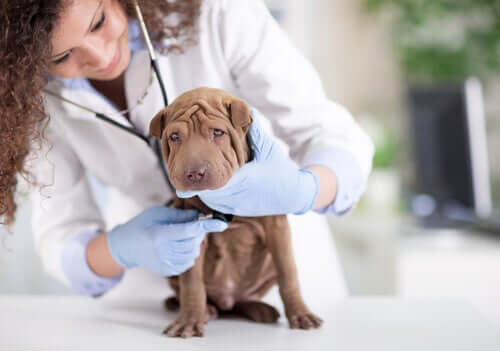Your Dog's Anal Glands: What You Need to Know

Your dog’s anal glands have an important function. They lubricate the rectum to help everything move well through them.
In cases where your dog’s anal glands aren’t working as well as they should, the consequences can serious, especially in the case of older dogs. Infections, bad smells, and, most dangerously, an abscess are possible consequences.
What are your dog’s anal glands?

If you study dogs or cats anatomically, you’ll notice the anal glands. Also known as anal sacs or scent glands, they are located on the sides of the anus and are about the size of a marble.
The primary purpose of your dog’s anal glands is to store a lubricating substance. This substance is necessary when the dog is defecating. It helps the dog to go to the bathroom easily.
There is also another very important function of this type of gland. It helps the animal to recognize other members of the same species. You may have seen your dog sniff another dog’s rear end. The smell that comes off of these glands is unique to each dog and lets them identify each other.
What if they don’t empty?
It’s normal for dogs to empty their anal glands without problems. However, if they are older or pregnant, they may have more difficulties.
Under normal conditions, the secretion that our pets produce is eliminated as the feces pass through the anus. However, you need to remember that inflammation and infection are frequent. You may notice some fluid retention and an inflamed anal area. This can be caused by either too soft stools or very dense stools.
You may see your pet dealing with itching, moderate or intense pain, a lack of appetite, licking the area continuously, rubbing its bottom on the floor, or continuously moving in circles, looking for relief.
On the other hand, if you detect blood in the area, you need to go to a vet immediately.
Long hair and parasites
If your dog has long or thick hair, you’ll need to maintain the hygiene of your dog’s anal area. Ideally, the anus should be free from hair. Your dog can also become uncomfortable if there is excess hair growth or fecal matter becomes trapped in the fur. It causes itching and irritation.
The cause of any discomfort could also be from parasites. One of the most common parasites, called Dipylidium Caninum tapeworm, can leave segments stuck in the anal area, causing intense itching. The dog will then seek relief by dragging its anus along the ground.
Emptying your dog’s anal glands
How often should your dog typically empty their anal glands? About once a month, but this depends on many factors. Often, any problems with emptying the glands are directly related to poor nutrition.
If you don’t have the proper experience, or you are nervous about helping your dog empty their anal glands, it’s best to let a vet do it. They can show you the best way to empty the glands. That way you can do it in the future if you would like to.
Steps to empty the anal glands

- Firstly, you’ll need to use thin latex gloves. This will let you use proper hygiene, but also have good maneuverability.
- It’s very helpful to have someone else to help hold the dog.
- Next, calm the dog down and slowly lift its tail. It’s normal that your dog won’t consent easily to you touching that part of its body.
- Once you locate the anal glands, gently stretch them while pushing them up. This is the proper way to push the liquid in the glands to the anus, which allows them to empty.
- The liquid may come out at high pressure. Be careful not to stand in front of the anus, as it could stain your clothes. To make sure that the liquid (which has an unpleasant odor) doesn’t get everywhere, you can use gauze.
This text is provided for informational purposes only and does not replace consultation with a professional. If in doubt, consult your specialist.